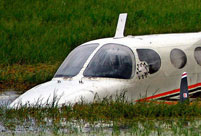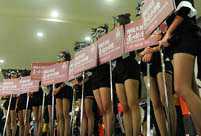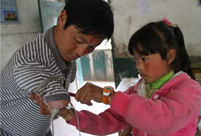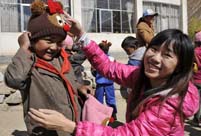Developing traditional Tibetan medicine
The People's Government of the Tibet Autonomous Region has made the development of traditional Tibetan medicine a key part of its health care strategy. It has drawn up the Decision on Strengthening Traditional Tibetan Medicine Work, Opinions of the People's Government of the Tibet Autonomous Region on Providing More Support to and Promoting the Development of Traditional Tibetan Medicine and some other related documents. These measures are conducive to the protection and development of traditional Tibetan medicine. Tibetan medical establishments at all levels in Tibet exploit their advantages to the full, and study special traditional Tibetan medical treatment techniques and drugs and put them into practice. They collate ancient books, records and documents on traditional Tibetan medicine, and have compiled and published the Annotations on the Four Canons of Medicine and other important documents in this field. Currently, Tibet has 19 Tibetan medical establishments, and over 50 county-level hospitals have departments of Tibetan medicine, making Tibetan medicine accessible to people throughout the region. Traditional Tibetan drugs are now produced in modern factories instead of small manual workshops, meaning they are produced in scale according to standardized procedures. The 20 Tibetan drug manufacturers registered in Tibet all have the GMP (Good Manufacturing Practice) certificate, and produce over 360 types of Tibetan medicine. Their products are sold in China and some foreign countries. The total value of their products reaches 100 million yuan or more. Traditional Tibetan medicine has gone beyond Tibet, and is now serving more and more people, both in China and around the world.
Respecting and protecting customs and folkways of ethnic minorities
The State respects and protects the right of all ethnic groups in Tibet to live and conduct social activities according to their own traditional customs and folkways; it respects and protects their freedom in attending normal religious service, performing sacrificial rituals, and taking part in major religious activities and folk festivals. While maintaining their traditional ways and styles of clothing, diet and housing, people of all ethnic groups in Tibet have absorbed new, modern customs in terms of clothing, food, housing, transportation, and wedding and funeral ceremonies. The Shoton Festival in Lhasa, Mt. Qomolangma Culture and Art Festival in Shigatse, Yarlung Art Festival in Shannan, the Great Canyon Culture and Tourism Festival in Nyingchi, Kham Art Festival in Qamdo, Horse Racing Festival in Nagqu, Shangshung Culture and Art Festival in Ngari, and some other festivals have been revived. National and international festivals such as the March 8th International Women's Day, May 1st Labor Day, June 1st Children' s Day, and October 1st National Day are becoming more and more popular. New customs and habits have been formed encompassing both national characteristics and spirit of the time. While the people' s material life keeps improving, every festival is a feast for the mind, giving them more and more recreational activities. Tibetan people like to spend the Incense Festival with relatives and friends; while Langma halls for song and dance performance and sweet tea houses are major places for Tibetan leisure and recreational activities.
Constantly enhancing public cultural services
In recent years Tibet has invested more and more in building its cultural infrastructure. Radio and television are accessible to every village and household, and there are libraries and cultural centers at county, township and village levels, popularized digital TV on the basis of cable TV and digital libraries, electronic reading rooms for the public, and other cultural projects for the people, including libraries in the countryside and monasteries and the Spring Rain Project, in which cultural volunteers from other parts of China go to the frontier to serve the people there. Through these efforts, the local government tries to protect the people' s cultural rights. By the end of 2012 Tibet had built eight people's art centers, 77 libraries, two museums, 73 county-level cultural centers, 239 township-level cultural stations, over 500 village cultural rooms. In addition, it had one regional center, 73 county-level sub-centers, 103 township-level stations, and over 3,000 village-level stations as part of the project for sharing cultural information and resources. As a result, a network of cultural facilities has taken shape, from the regional level at the top all the way to the villages at the bottom. In 2012 Tibet completed the task of providing radio and television access to 50,500 households of farmers and herdsmen, bringing the number of such households to over 85 percent of the total. Lhasa completed the digital conversion of cable TV in 131 communities, and built five core sub-platforms at the prefectural or city level. Digital film screening service is now available in all farming and pastoral areas, with films shown on over 130,000 occasions for free. In 2012 Tibet dubbed over 10,000 hours of TV programs and 75 films. It built 5,451 small libraries in the countryside and over 1,700 libraries in monasteries, making such facilities accessible in all administrative villages and all monasteries of Tibetan Buddhism. Tibet now has ten professional performing art troupes, over 20 county-level folk art troupes, over 160 amateur performing art and Tibetan opera troupes, and over 4,000 cultural and performing art professionals. Professional performing art troupes have worked harder in artistic creation, launching Princess Wencheng in Peking Opera and Tibetan Opera forms, Colorful Hada, Heavenly Tibet and Tibet Spring in song and dance performances, Liberation, Liberation and Tashigang in drama form, and a film titled Thangka. Moreover, Tibet has enhanced its cultural exchanges with other countries and regions. Over the past 60 years it has sent more than 360 groups or teams of nearly 4,000 people to over 50 countries and regions for visits and for performances in over 110 overseas cities. It has also received over 200 experts and scholars from over 30 countries and regions for performances, lectures and exhibitions.
 |  |
 No news of survivors in Lao Airlines crash
No news of survivors in Lao Airlines crash Five fighters in flight training
Five fighters in flight training London mayor hails free trade, subway system on China tour
London mayor hails free trade, subway system on China tour Different eye catching shows at housing fairs in China
Different eye catching shows at housing fairs in China Chalk it up to great courage
Chalk it up to great courage Tibetan girl helps mobilize volunteers onlin
Tibetan girl helps mobilize volunteers onlin Lingerie show dazzles Wuhan Motor Show 2013
Lingerie show dazzles Wuhan Motor Show 2013  Chinese screen goddesses from Beijing Film Academy
Chinese screen goddesses from Beijing Film Academy  Weekly Sports Photos
Weekly Sports Photos Bayi Parachute Team of PLA Air Force
Bayi Parachute Team of PLA Air Force World has never been dark-- a blind kid’s life in Tibet
World has never been dark-- a blind kid’s life in Tibet Change to law may make it easier to sue polluters
Change to law may make it easier to sue polluters UNESCO world heritage site: Montale Tower
UNESCO world heritage site: Montale Tower U.S. Senate leader announces bipartisan deal
U.S. Senate leader announces bipartisan deal Fiber-optic wedding dress show shinning in Suzhou
Fiber-optic wedding dress show shinning in Suzhou Day|Week|Month